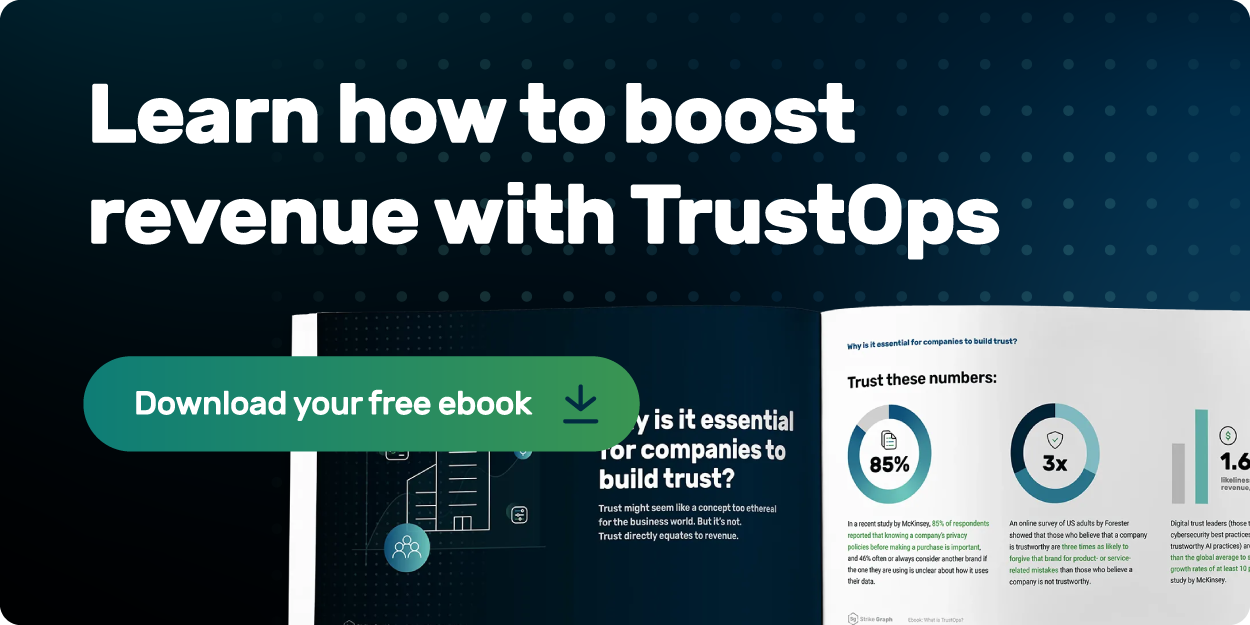Startups need to take special care to be proactive in ensuring their security compliance, or else they risk tremendous potential costs, financial and otherwise.
With your startup’s reputation and financial well-being on the line, there’s no room for cyberattacks or data breaches. If you don’t have ways to make sure your startup’s data is secure, the time to act is right now.
What does this mean, and why is it so important to act fast? Read along to find out more, and we’ll walk you through the what, why, and some of the basics of security compliance, so you know where to start.
1. Security compliance is non-negotiable for startups
Having worked with many startups, we know that a lot of things in the world of startup culture can be unconventional and negotiable. Security compliance is not one of those things.
Cyberattacks are increasing yearly, and the average cost of a data breach in the U.S. is $9.44M in 2022. Likewise, ransomware attacks have grown 41% over the last year, costing $4.54M this year alone.
These numbers are alarming, but they only tell part of the story. In the case of a data breach, the compromised business has to work hard to try and get out in front of it and then work its way back into customer (or investor) trust. In many cases, operations in the business have to cease entirely. Stock prices might drop, and the business might lose customers, partners, and investors. Not to mention there’s a risk of litigation, like the $425M class action Equifax settlement.
The reality is that some businesses, especially smaller ones, don’t come back from this.
You might assume that cyberattacks really only concern larger, major corporations, but that’s likely because that’s what makes news headlines (just like the one above). Research shows that hackers are actually more likely to go after smaller businesses. Why? They lack the thorough, expensive security measures of their larger counterparts, and they’re generally less prepared. Thankfully, you don’t have to follow in their footsteps, but you do have to move fast.
2. Startup security compliance sets you up for success
As much as security compliance shelters you from attacks, it also sets you up for future success. The above-listed negative ramifications have long-lasting effects, so avoiding them early on is key.
With the right security measures in place, you’ll save yourself and your team from undue amounts of stress, headaches, and financial turmoil. You can focus on building and growing the business rather than wasting your time and energy on damage control, which might only make a marginal difference in the end.
And growing your business means checking off the right boxes for the right people. If you’re looking to make deals with established businesses, you’re more than likely to find that they have set compliance requirements your business needs to meet.
Now is the time to prepare your company’s compliance before it starts costing you deals.

3. Startup security compliance isn’t a hurdle; it’s a launchpad
If you’re running a startup, freedom is important to you, and regulations surrounding compliance may seem difficult, overwhelming, and limiting. Here’s what you need to know:
Ensuring your security compliance gives you more, not less, freedom.
Again, this isn’t negotiable, so viewing compliance as a hurdle only hurts your business. Instead, think of it as one of the many ways you seek to build trust. Your future business partners, investors, shareholders, and customers want to transact with a business they find trustworthy. They want to see that you’re maximizing your security efforts, and it may be that single factor that determines whether or not you close a deal.
In other words, your trustworthiness and revenue are closely linked, and if you can build trust, you can grow your revenue.
Security basics for startups
Of course, we couldn’t just tell you to implement a plan without giving you some information on the basics of compliance. The simplest way we discuss this is by breaking it down into four categories that follow in sequence:
Risk → Controls → Evidence → Certification/compliance
Risk
These terms sound more technical than they really are — don’t worry. You already know what risk is, but when it comes to compliance, it more specifically refers to things like privacy breaches, standard operating procedures, and workplace safety. They can be broken down into three high-level categories: regulatory risks, industry standards, and internal policies and practices. And, you identify these risks using a risk assessment. Failure to comply with these could result in negative repercussions in the form of legal, financial, business, or reputational consequences.
Controls
So, how do you mitigate these risks? With controls. Controls are specific measures you implement as a company to reduce the chance of these risks occurring. They are created with specific risks in mind. Controls are not suggestions but policies and procedures built into the framework of your standard course of operation.
Some controls are created to detect, others to prevent, and others to correct risks. In order to implement the right and most comprehensive controls, you first have to understand every potential risk. And these controls will more than likely change over time to address weak spots in your security stance.
Evidence
Evidence is simply the term for providing the necessary proof that your controls are being adhered to. Evidence can include a lot of different types of information, but here are a few common ones:
- Firewall configuration
- Change tickets
- Alert configurations
- Memos
- Automated workflow settings
- Meeting agendas with notes
So, every risk has a control, and every control’s effectiveness is verified with evidence. Why is this necessary, even if you trust your employees or colleagues to follow procedure? It’s necessary because you’ll need to provide proof of risk mitigation to move to the next step: achieving compliance.
Certification/compliance
Not all compliance comes with a certification. But, if you’re working with a security framework that doesn’t have a method to achieve formal certification, how can you be sure you’re compliant?
For example, there is no official HIPAA (the Health Insurance Portability and Accountability Act of 1996) certification endorsed by the US Department of Health and Human Services. And yet, any organization that collects, processes, stores, or shares protected health information is considered a covered entity under HIPAA and must meet its requirements.
Despite the lack of an official certification, any organization that’s a covered entity must be able to prove that it is complying with HIPAA at any time throughout the life of the business (another reason we recommend you secure compliance as soon as possible). This is where a compliance operations and security platform like Strike Graph can help.
You could potentially complete and maintain this process on your own, but this can take upwards of hundreds of hours of work for a single compliance framework, which isn’t ideal for most startup founders. Or you can use a platform like Strike Graph which is designed to empower you to handle the compliance process yourself, even if you have no prior expertise with security compliance. Our users, regardless of security experience level, reach and maintain (for example) SOC 2 compliance 86% faster than companies using traditional methods.
For a more detailed look at cybersecurity compliance, check out our previous article, “Understanding cybersecurity compliance.”
How Strike Graph can help your startup
Given our extensive experience in working with startups, we have a special appreciation for what you do, and we want to give you the tools to design and operate a security program so you can quickly achieve compliance.
If it sounds overwhelming, don’t worry — the Strike Graph platform performs an initial risk assessment that tailors the process to your company’s unique needs, saving you time and money. It will then walk you through that process, with clear step-by-step instructions so you can achieve compliance as soon as possible. And once you have that, the door will be open for your startup to build trust, land more deals, and maximize your revenue.
.jpg?width=1448&height=726&name=Screen%20Shot%202023-02-09%20at%202.57.5-min%20(1).jpg)










